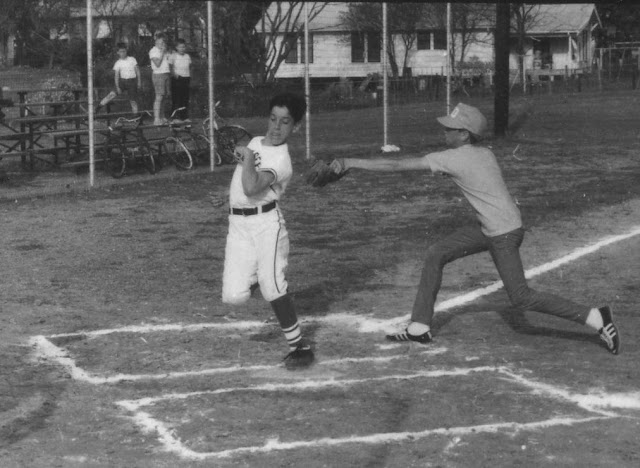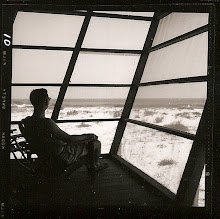
When John, David, Tommy and Mary Marshall were very young, each year on the first Sunday in Advent, Jack Marshall would try to set the proper tone for the upcoming Christmas season.
"Stir up thy power, we beseech thee oh Lord, and come!" he would read with his most fervent Catholic voice, while John, the oldest, enjoyed the privilege of lighting the first candle on our homemade Advent wreath as we sat down to our Sunday meal.
The process was repeated with the appropriate reading for each Sunday in Advent. Then the candle-lighting privilege passed down through the birth order, so that David was accorded the honor on the second Sunday, then me on the third, and finally little Mary, usually with some help from Mom, lit all four candles in the final days before Christmas.
For a while it worked.
All of us spent the weeks watching as Dad added little creatures to his homemade nativity scene. The manger remained empty, though, until Christmas morning, when a tiny little plastic baby Jesus appeared as if by magic.
But despite Jack Marshall's best efforts, the weeks leading up the big day in the Marshall household inevitably and steadily devolved into a frenzy of gift buying, tree trimming and house decorating.
It started perhaps with the famous Christmas Festival just down Highway 1 in tiny Natchitoches, LA, where our St. Joseph's band sometimes marched in the annual parade on the first weekend in December. (The festival was made even more famous years later when it was portrayed in the movie "Steel Magnolias.") The same parade where Jack Marshall snapped the photo, below, of "Miss Christmas Festival" on December 5, 1959, as she proudly waved to the crowd in front of the Piggly Wiggly store.

Buying a tree always was a big deal to Jack Marshall. The whole family would pile into our '52 Chevy (nicknamed "The Metal Monster" by my older brothers) and drive to the big tree sale lot run by the Optimist Club near the corner of Youree Drive and Kings Highway. I imagine that when the tree salesmen saw our big crew unload, they all suddenly wanted to take a break and duck into Murrell's Grill for a cup of hot coffee. Because each of us had a different -- and strong -- opinion about which tree was best.
After careful inspection of every tree on the lot, and mindful of Dad's budget restrictions ("Nothing over $10 kids"), a tree was selected and ceremoniously tied to the roof of The Metal Monster using an intricate series of slip knots that my father proudly demonstrated to us. Then we drove home with our prized possession blowing in the wind above us, like the carcass of a giant moose that was going to feed the family for the winter.
Once home, the fun turned serious.
First, Dad, John and David were charged with putting the tree into the stand and getting it straight. This usually took only an hour or two, while Mom, Mary and I were unboxing the rest of the decorations and checking the lights. For some reason, Christmas tree lights mysteriously ceased to operate during their summer in the scorching hot attics of Louisiana. After several trips to the TG&Y store for spare bulbs and working extension cords, the tree was lit and decorated with ornaments.
And then, the much anticipated final glorious ultimate level of decoration: tinsel.
Each of us was given a carefully tied bundle of tinsel from last year's tree, which my father had carefully saved. (Others families inexplicably discarded their trees each year after Christmas with most of the tinsel still tangled in the branches, but not the Marshalls!) And we were reminded vigrously that for the most realistic effect, each and every strand of tinsel must, repeat MUST, be hung carefully and individually from the limbs of the tree. Dad ceremoniously demonstrated the proper technique, and then retreated to one corner of the room to watch his young charges follow his careful orders.
John was exacting and perfect in following the guidelines (he is now an accountant by the way). David, being tall, always did a great job at the top of the tree. Which left the bottom branches to Mary and me.
Let's just say that's where Jack Marshall's plan usually went awry.
I promise, I tried to follow Dad's instructions. And I actually did for the first few minutes. But my young attention span was not focused enough for the task and soon I was sneaking two or three strands at a time onto the limbs. And almost from the start, Mary believed the tinsel was just plain fun, and should be twirled, spun, waved and ultimately tossed in huge unruly chunks anywhere and everywhere on the tree.
In her defense, Mary had more fun than the rest of us put together. And, I believe, Jack Marshall had fun watching her too, as you can see by his photo at the end of the article, taken in December of 1958.
With the tree decorated, it was time for one last photo, top, before the presents began to fill the space underneath. And then began the countdown to Christmas Day itself, when all those wonderful presents provided the Marshall kids with a fitting end to the holy season of Advent.
Wherever you are this morning, I hope you are with family, sharing the wonder and magic of Christmas. I am in Shreveport at Mary's home, and her expertly trimmed tree is a perfect centerpiece to this happy day. Somewhere in heaven, I am certain that Jack Marshall is enjoying his fragrant fir with real icicles hanging gloriously and perfectly from each branch.
Merry Christmas everyone!

on Christmas Day 2009 in Shreveport



































